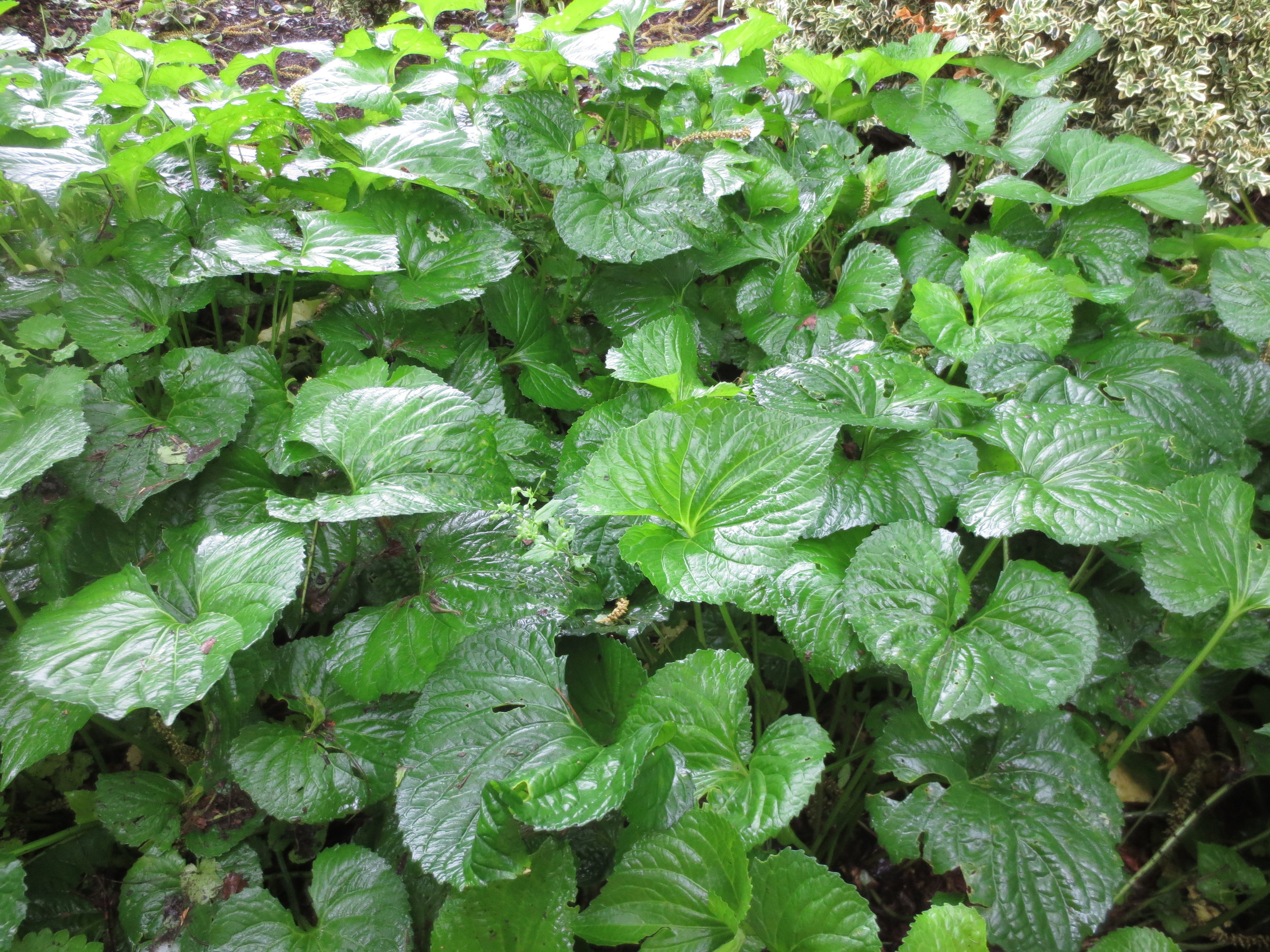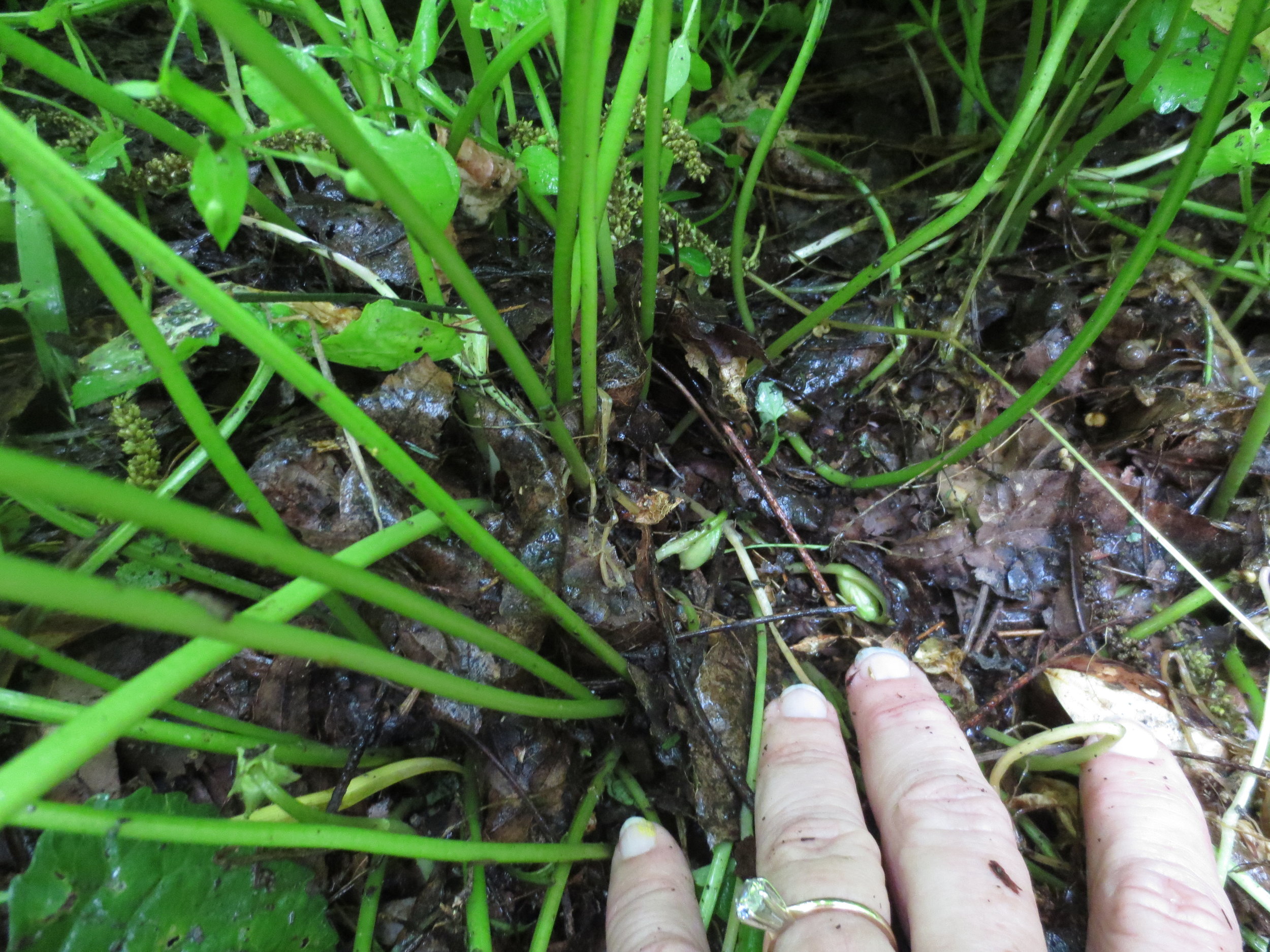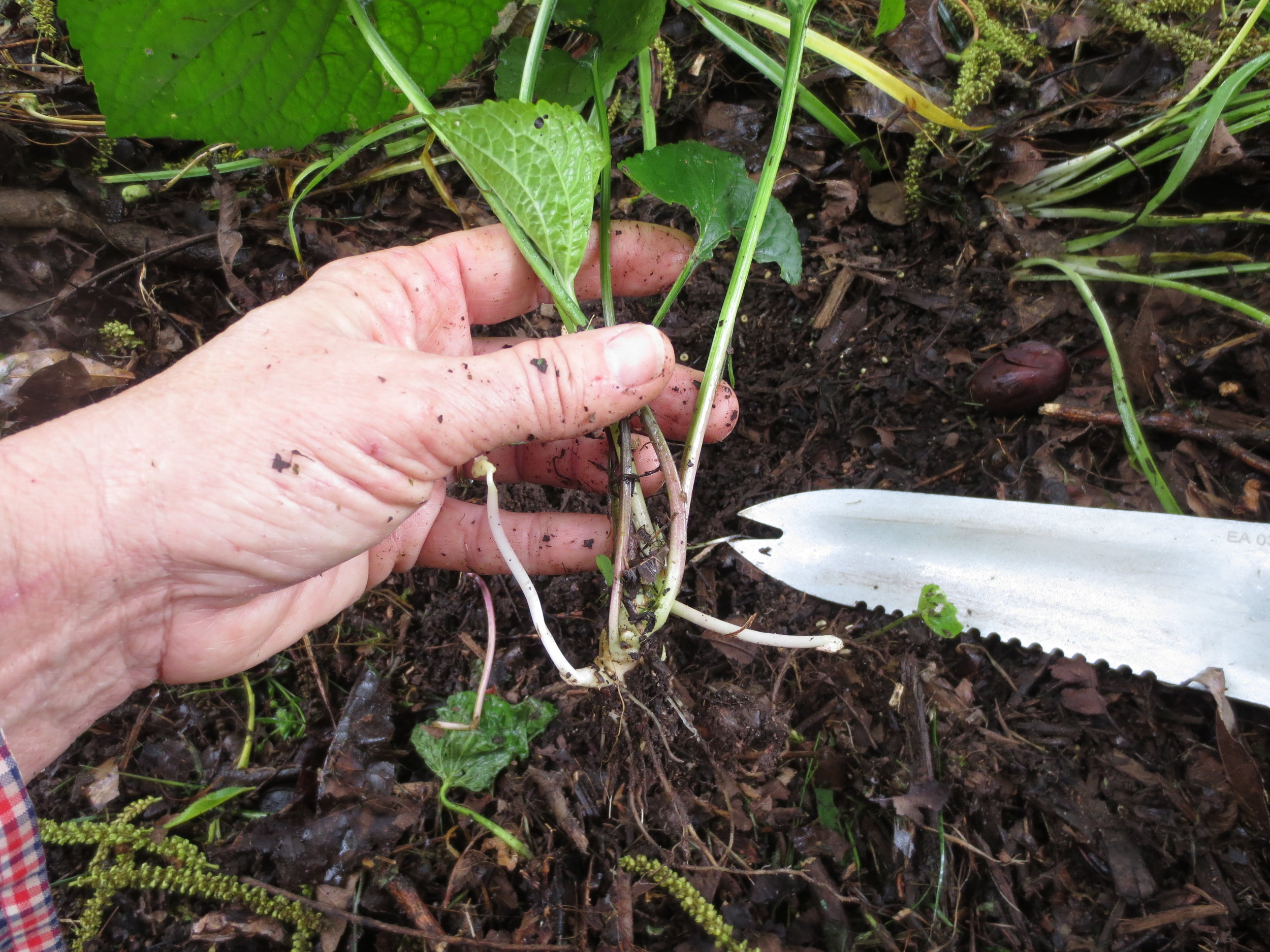In Victorian times, flowers were given certain meanings, a symbolism known as floriography. Some of these associations are still familiar. Roses signify love and romance. Daisies mean innocence or purity. Carnations mean “I wanted to send you flowers but roses are too expensive and these last longer.” What about violets? According to the website TheLanguageOfFlowers.com, blue violets symbolize watchfulness or faithfulness while white violets supposedly convey the message, “Let’s take a chance on happiness.”
According to one of my gardening books from the early 1950’s, the violet was Napoleon’s favorite flower. His followers wore knots of these to show loyalty. Ancient Greeks believed that eating the blossoms could overcome hangovers.
Any gardener can tell you that the true meaning of violets is World Domination. They are a James Bond-type villain of the plant world. Several years ago, a few of these wild flowers appeared in the spaces between my tall bearded Iris. I thought they made a charming groundcover, choking out other weeds while producing pretty violet blue (in my mind, purple) flowers. I went indoors for a glass of lemonade and when I returned to the garden, the handful had magically turned into fifty plants. In one growing season, these multiplied into hundreds. In my ignorance, I thought them benign. Sadly, it is extremely difficult to eliminate a violet invasion.
The pretty blooms produce seeds, but so do tiny, greenish blooms that are held at ground level and concealed by the foliage. The plant develops a thick root, known as a crown. If you are attempting to dig them out of your flower beds, the entire crown must be lifted. Any portion left behind happily grows a new plant. I have had limited success with herbicides like glyphosate and 2, 4-D. My flame-thrower killed off the top leaves but left the roots intact. To remove them, I lift the crowns using a tool designed for digging out tap-rooted weeds like dandelions. It is sometimes called an asparagus knife and looks like a screwdriver with a wide, forked tip. (Just this week, I purchased a new tool from my local big box store. It is a high-quality item made by Fiskars, looks like a forked knife, and is becoming indispensable in my arsenal of Weapons of Weed Destruction.)
Wild violets thrive in shady areas and heavy clay where few other plants grow well. They are impervious to the toxic effects of juglone, so they grow well under black walnut trees. Deer rarely eat them. Mostly by default, I have decided to treat them like an intentional groundcover in the Mary Snoddy garden. At some point the violets will meet the ever-encroaching common Bermuda grass. Can’t wait to see which one is the victor in the coming plant Armageddon.


